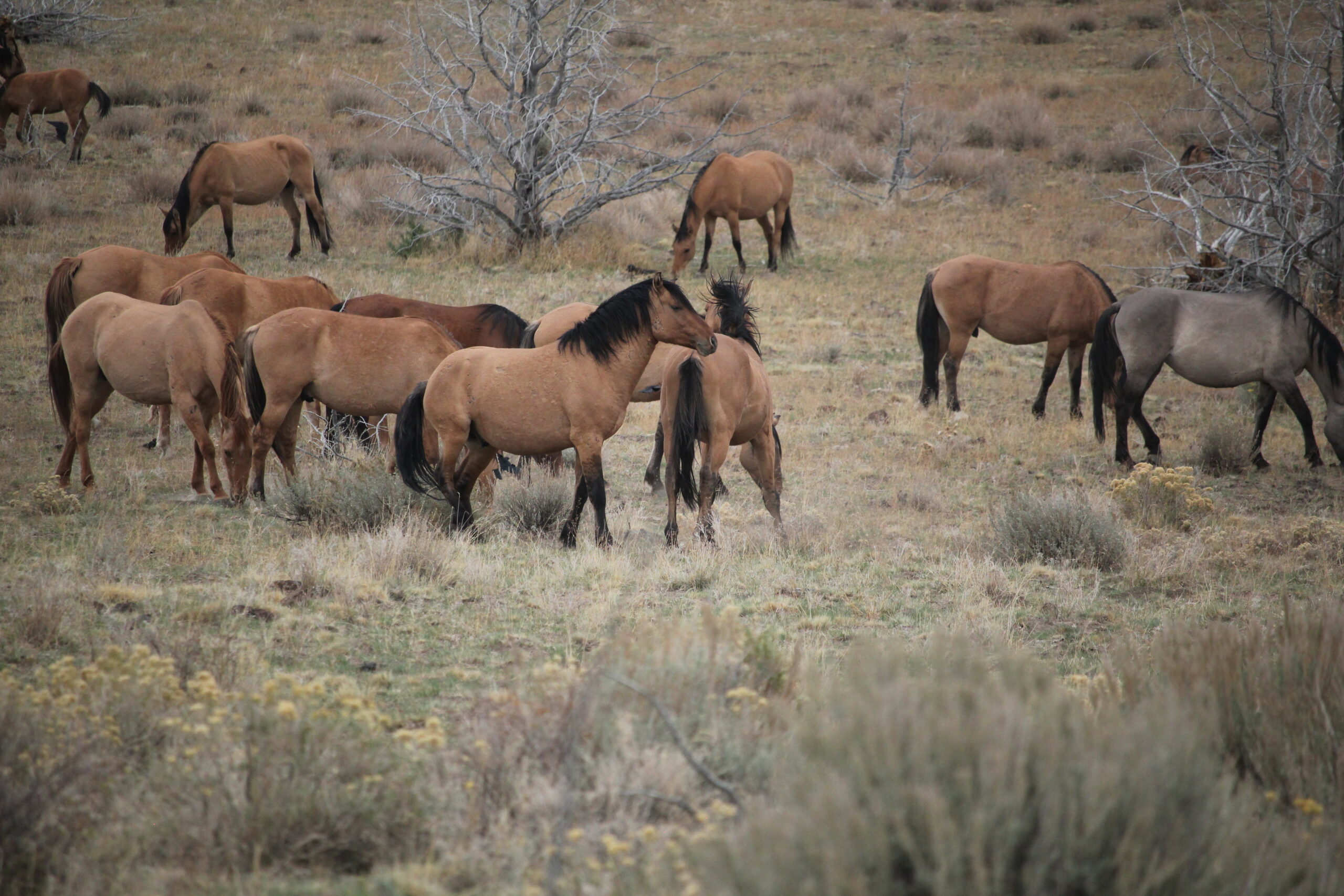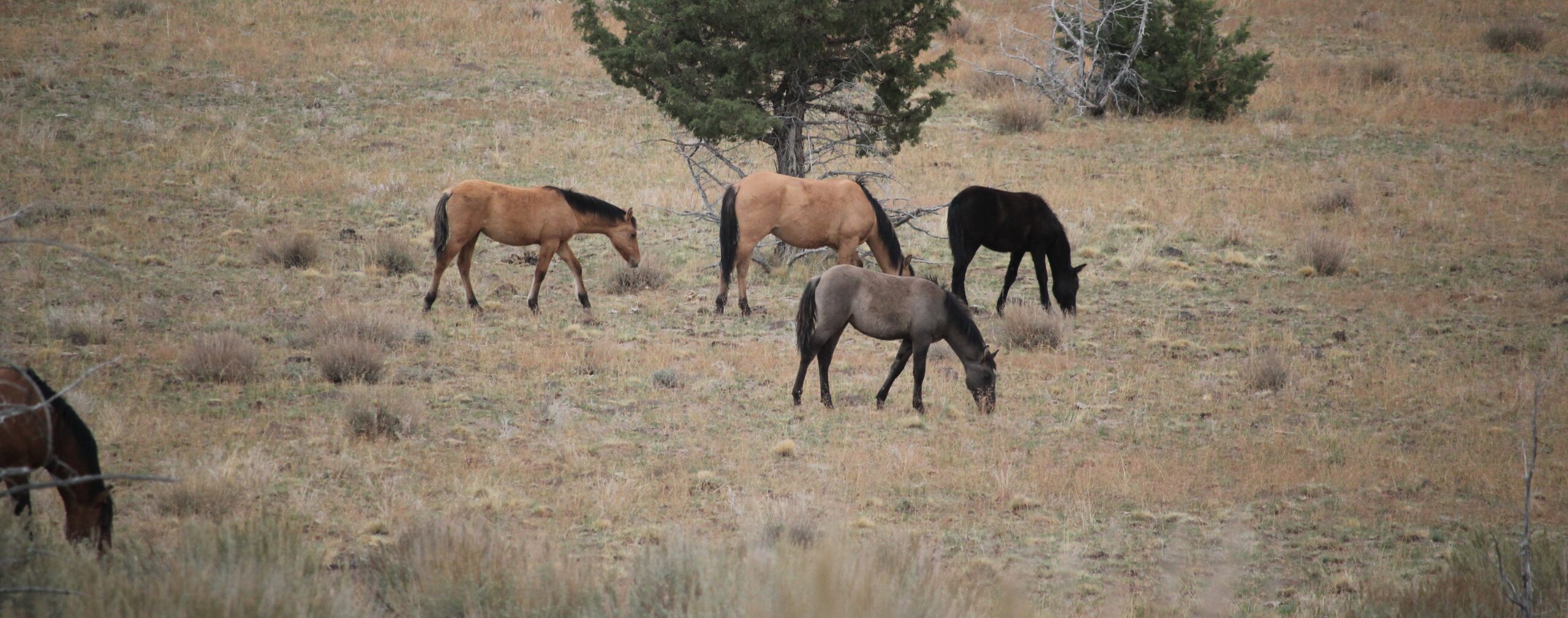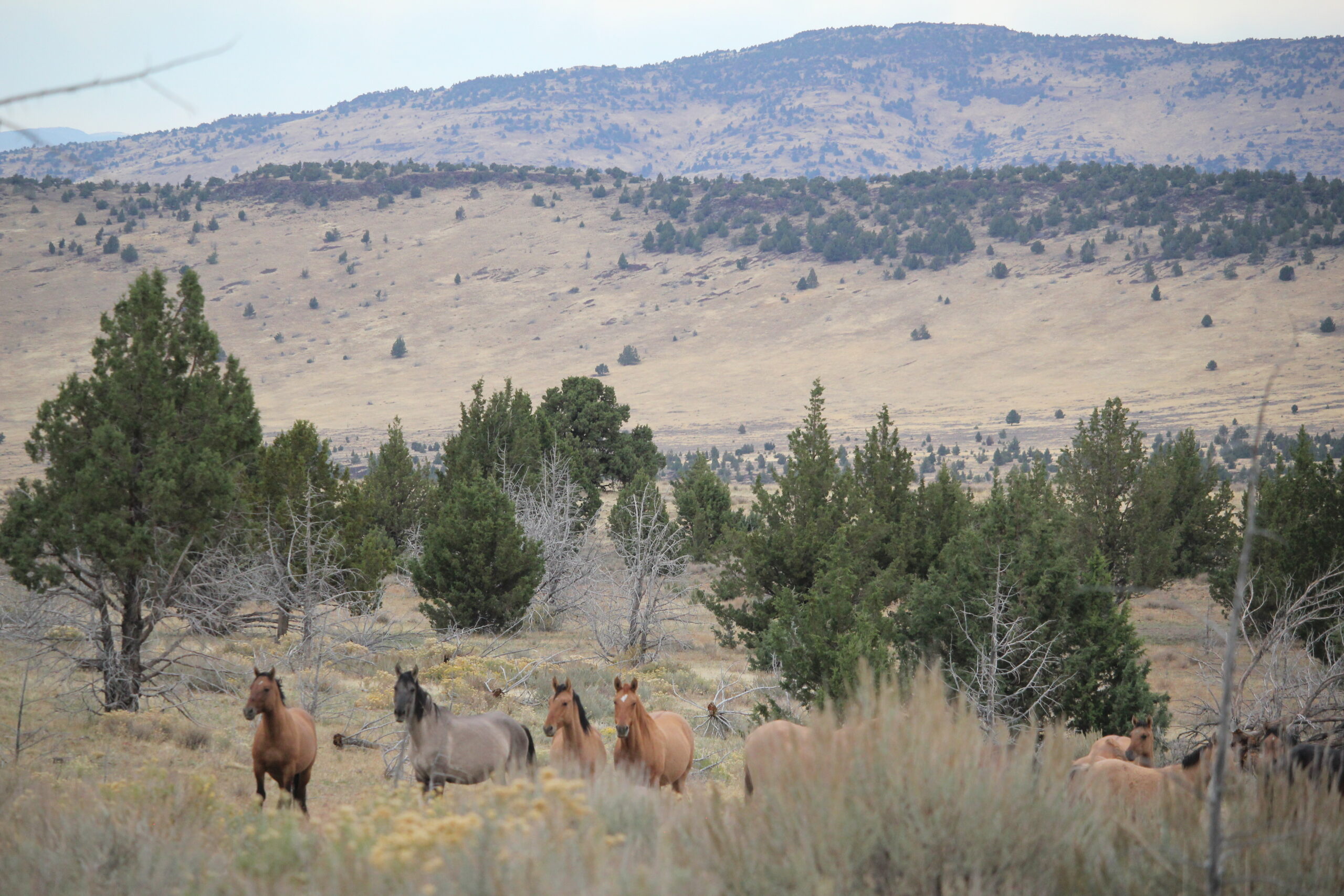Recently, I had the opportunity to visit the Kiger Mustang Management Area in southeastern Oregon. Getting there is an experience, as it is on backroads. Then, seeing the mustangs involves some luck as the management area is about 36,000 acres. I was very fortunate to see these amazing animals on such a beautiful day. The area is about 50 miles south of Burns, Oregon, and several miles east of Diamond. An all-wheel drive vehicle is recommended.
For more information visit the BLM’s Kiger HMA webpage.



